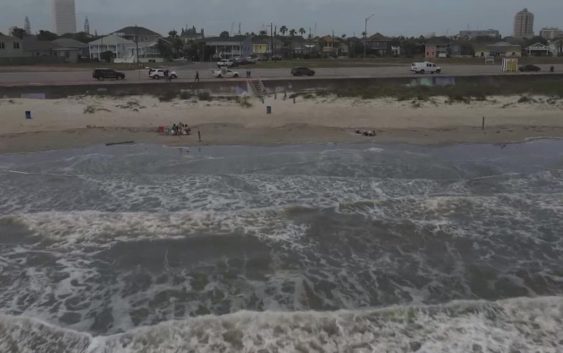- EF-1 tornadoes ripped through Cypress, Waller County areas with winds at more than 100 mph, NWS reports
- Houston-area storm damage updates: Clean up continues after NWS says two EF-1 tornadoes and powerful derecho ripped through SE Texas
- Low risk of damaging winds, hail from Saturday storms
- EF 1 tornadoes ripped through Cypress, Waller County areas at more than 100 mph, NWS reports
- Caddo Mounds State Historic Site to celebrate new visitor center, traditional grass house after 2019 tornado
Ike Dike: A $29 billion plan to defend Texas coast from powerful hurricanes

Experts say the Ike Dike is needed to protect the Port of Houston and the continent’s largest petrochemical complex from deadly, devastating storm surge.
HOUSTON — Hurricane season will be here again in just a few months and due to climate change the storms are more frequent and more severe than ever before.
That’s why an extraordinary project called the “Ike Dike” is back in the spotlight. Officials say it’s the key to saving the Texas coast.
“I know what storm surge can do,” said Michel Bechtel.
Bechtel is Mayor of Morgan’s Point, Texas. He’s seen the destruction storms do firsthand. Hurricane Katrina destroyed his home.
“It’s a life-changing event,” said Bechtel.
Three years after Katrina, Hurricane Ike and its 17-foot storm surge slammed the Texas coast causing $30 billion dollars in damage.
“We can’t do anything about the wind and rain in a hurricane, but we sure as hell can mitigate storm surge,” said Bechtel.
Bechtel now serves as President of the newly formed Gulf Coast Protection District. It’s a state body that will manage and help fund what’s known as the Ike Dike, giant flood gates similar to those used in the Netherlands.
It’s been 14 years since the concept was first sketched out by a professor at Texas A&M University Galveston. Now it’s part of the Army Corps of Engineers $29 billion plan to defend a large chunk of the Texas coast from mother nature’s wrath.
“It’s unprecedented for the Corps,” said Mike Braden, chief of the Galveston District Mega Project Division for U.S. Army Corps of Engineers.
They say everything is bigger in Texas and the project certainly fits that bill. It’s intended to protect 70 miles of coastline turning Galveston Bay into a sealable fortress anytime a hurricane threatens.
RELATED: The Ike Dike | Here’s what it is
Massive gates that open and close would be built along this 2.5 mile stretch between Galveston Island and Bolivar Peninsula. It’s just one part of a plan specifically designed to keep life threatening surge from the nation’s busiest port in Houston and the continent’s largest petrochemical complex.
“This is a large defense system, but it’s protecting something that is nationally significant,” said Kelly Burks-Copes, project manager with the U.S. Army Corps of Engineers.
Burks-Copes says it’d be the largest infrastructure project in the nation. The federal government would pay for 65% of the cost, the rest would be up to Texas. And the clock to make it happen is ticking.
“Doing nothing is a clear risk,” said University of Houston professor Dr. Donald Van Nieuwenhuise.
Experts say every single hurricane season there’s a chance Houston will be in the path of a monster.
“It’s not just one, we could see a series of hurricanes and with climate change those will be stronger, so it’s not an if, but when,” said Burks-Copes.
If approved by Congress, the project could break ground as soon as 2023 and take 19 years to fully finish.